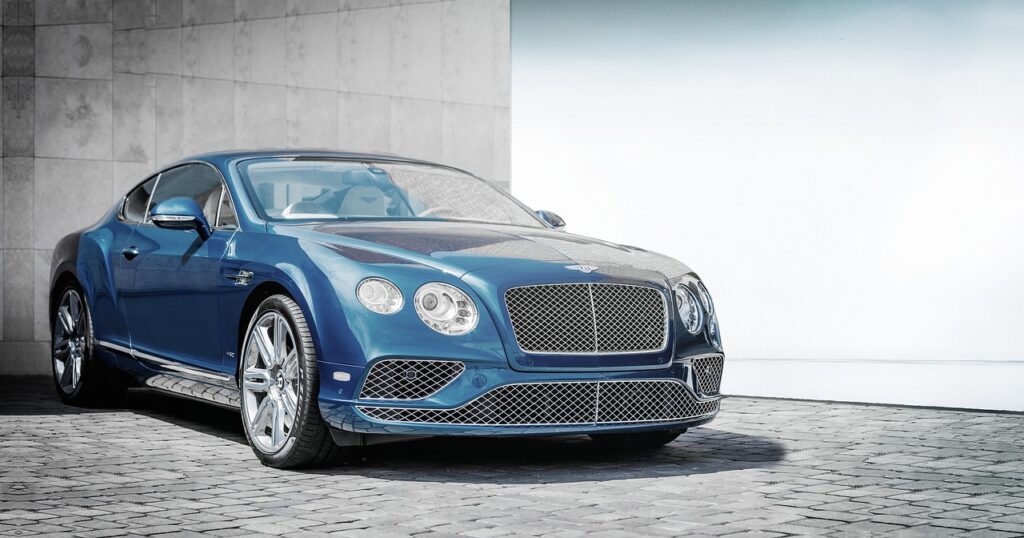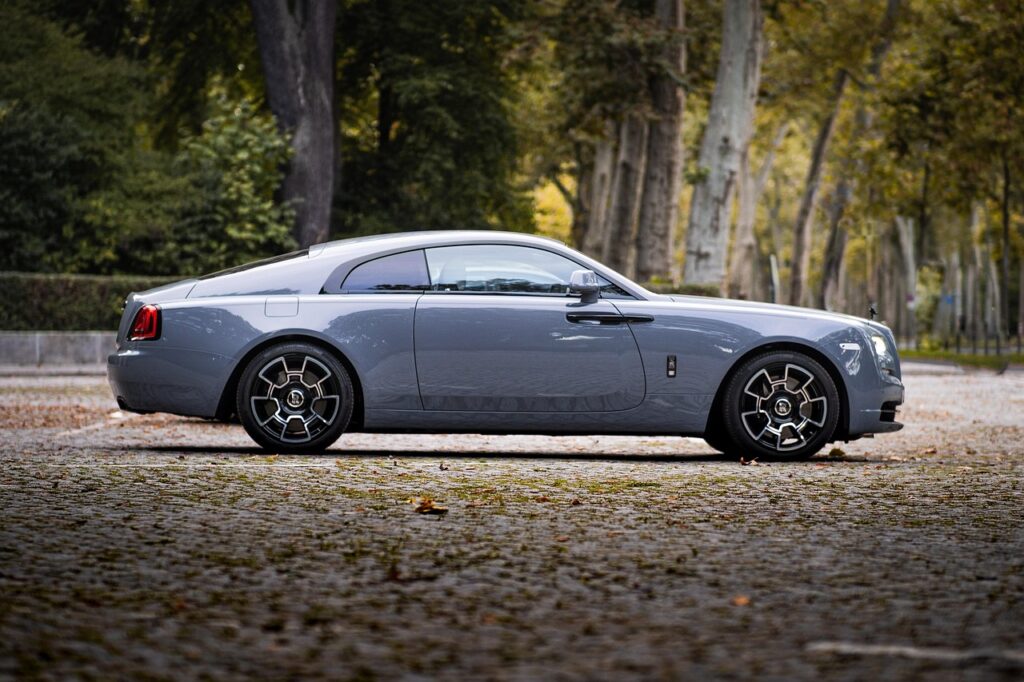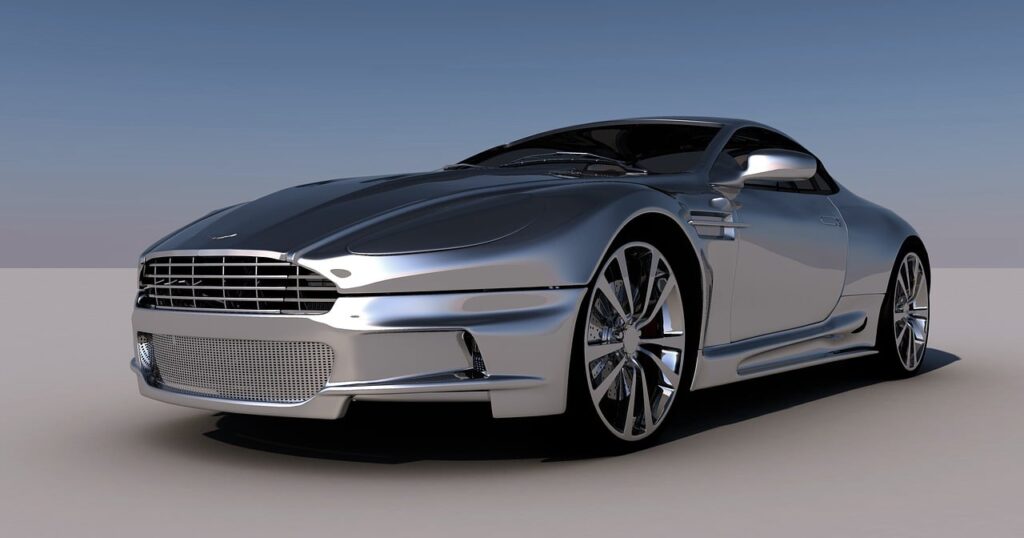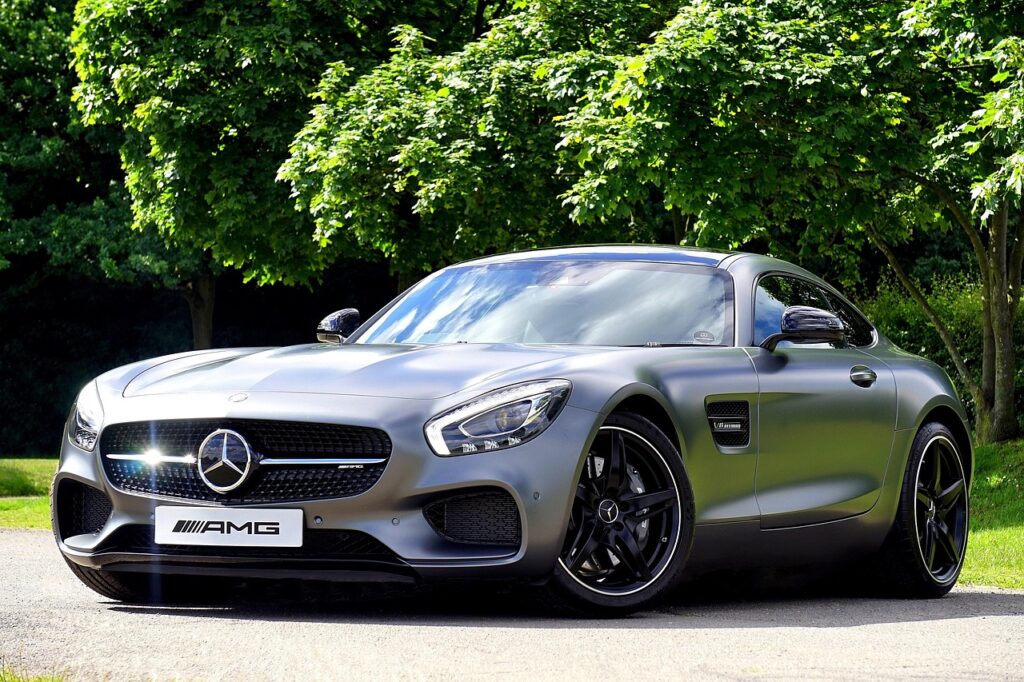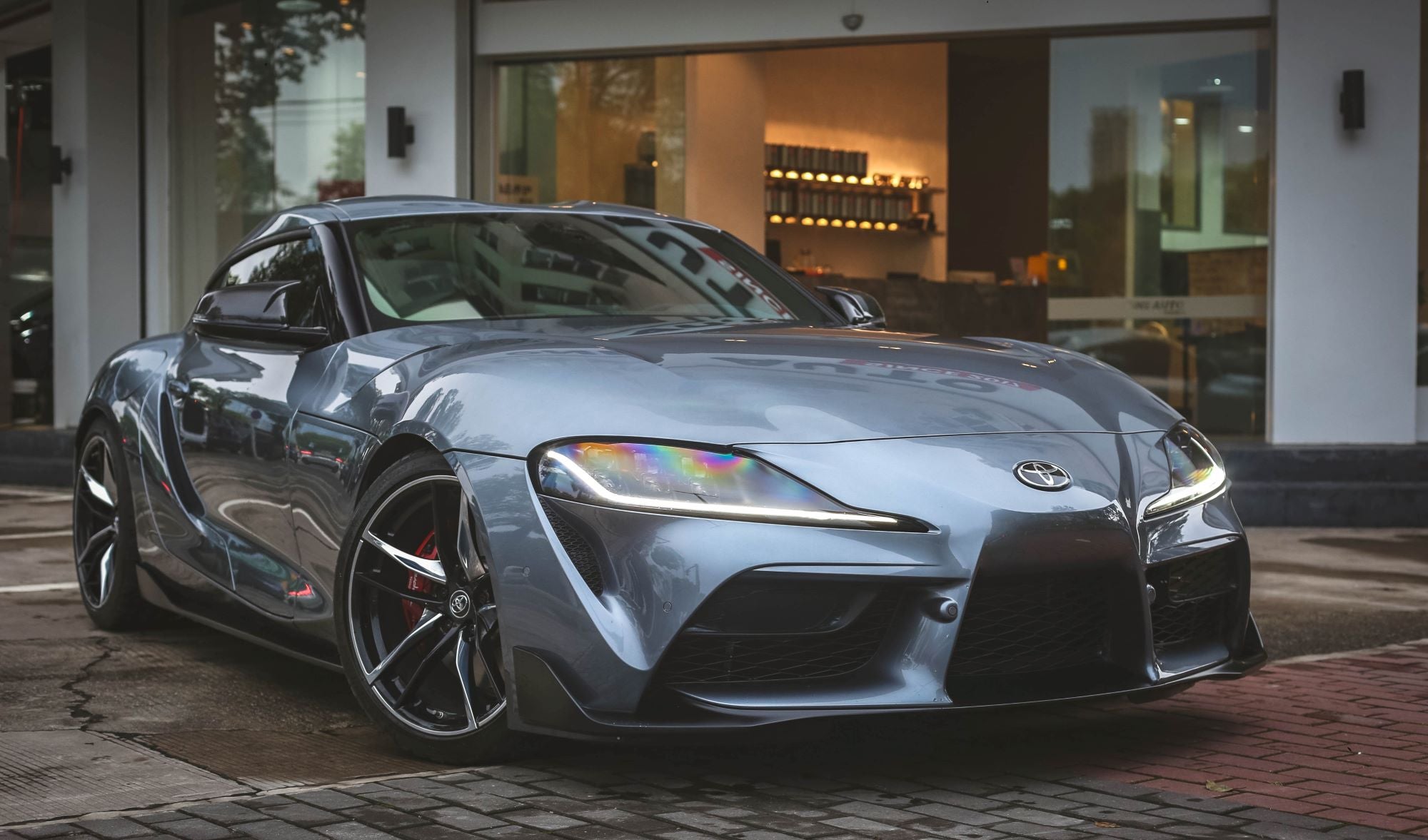The evolution of car design is a compelling narrative, weaving together threads of technological advancement, shifting consumer preferences, and profound cultural influences. From the rudimentary contraptions of the late 19th century to the sophisticated, intelligent machines of today, each era has imprinted its distinct aesthetic and functional signatures onto the automotive landscape. What once seemed purely an engineering exercise rapidly transformed into a dynamic canvas, reflecting society’s aspirations, economic realities, and groundbreaking innovations.
Initially, vehicles were conceived as practical, albeit experimental, modes of transportation, with little thought dedicated to their visual appeal. Yet, as the automobile transitioned from a mere curiosity to a mainstream necessity, its form began to gain equal footing with its function. This intricate dance between aesthetics and utility has consistently defined the industry’s progression, turning yesterday’s radical concepts into today’s cherished classics and providing a visual timeline of human ingenuity and adaptation.
This in-depth exploration delves into the pivotal design elements and philosophies that have shaped the automotive world, tracing its journey through distinct historical periods. We will uncover how specific features and overarching design trends not only distinguished vehicles from one decade to the next but also revealed deeper insights into the technological capabilities and cultural values prevalent in their respective eras, laying the groundwork for the future of mobility.

1. **The Pioneering Years and Early Silhouettes (1880s-1900s)**The very genesis of automotive design was rooted in pure functionality, a period where the concept of ‘aesthetics’ was largely secondary to mechanical viability. The earliest automobiles, emerging in the 1880s and 1890s, bore a striking resemblance to their horse-drawn predecessors, earning them the moniker “horseless carriages.” These vehicles were characterized by tall, narrow bodies perched precariously on thin wheels, prioritizing the bare essentials of locomotion over any stylistic considerations, fundamentally operating as experimental machines rather than consumer products.
Karl Benz’s groundbreaking Patent-Motorwagen from 1886 stands as a prime example of this engineering-first approach. It featured an exposed engine and a spindly framework, largely devoid of any bodywork that would later become synonymous with automotive design. The focus was squarely on demonstrating mechanical function, proving that a self-propelled vehicle was not only possible but could serve a practical purpose, laying the groundwork for a technological revolution without immediate concern for visual appeal or driver comfort.
As the turn of the century approached, a more standardized, yet still fundamentally practical, design began to take shape. The 1908 Ford Model T was a watershed moment, introducing a robust front-mounted engine, an enclosed passenger compartment, and a pragmatic layout that would profoundly influence automotive design for subsequent decades. Its mass production methodology, pioneered by Henry Ford in 1913, made automobiles accessible to a wider populace, shifting the perception of cars from luxury curiosities to mainstream transportation tools.
These early vehicles universally emphasized utility over luxury. They featured high seating positions, minimal weather protection, and readily exposed mechanical components—a stark reflection of their origins as experimental machines rather than refined consumer products. The sheer novelty of self-propulsion overshadowed any demand for sophisticated styling, setting the stage for subsequent decades where form would increasingly complement, and sometimes even challenge, pure function.
2. **The 1920s: Flamboyance and Ornamentation**Following the utilitarian beginnings, the 1920s ushered in automotive design’s first true artistic flourishing, a decade defined by unprecedented flamboyance and lavish ornamentation. As manufacturing techniques advanced and became more refined, particularly with the widespread adoption of standardized production, car bodies evolved into sophisticated and stylistically distinct forms. The practical necessity of open-air designs began to recede, replaced by the widespread adoption of closed cabins, which offered enhanced comfort and much-needed protection from the elements, fundamentally transforming the driving experience for the affluent.
Luxury marques of this vibrant era became paragons of opulence, showcasing an array of highly detailed design cues that overtly communicated status and sophistication. Brands synonymous with prestige, such as Rolls-Royce, Packard, and Duesenberg, adorned their vehicles with elaborate radiator grilles, intricate hood ornaments often sculpted into figures, and gleaming chrome accents. These features weren’t just decorative; they were powerful statements of wealth and discerning taste, distinguishing their owners on the burgeoning roadways and cementing the car’s role as a social symbol.
The decade also saw the introduction of more dramatic aesthetic choices, including striking two-tone paint schemes that added visual depth and sweeping fenders that created a sense of fluid motion, enhancing the vehicle’s perceived dynamism. The practical, often rustic, wood-spoke wheels of yesteryear gracefully gave way to more modern steel disc wheels, frequently embellished with decorative patterns that contributed to the overall luxurious appeal. This period marked a significant departure from the barebones utility of early cars, embracing design as a statement.
Even the interiors underwent a significant transformation, evolving from stark utility to plush upholstery, elegant wood trim, and elaborate dashboards featuring increasingly complex instrumentation. This era of burgeoning flamboyance and refined aesthetics demonstrated unequivocally how automotive design was becoming an art form in its own right, moving beyond simple transportation to embody prestige, craftsmanship, and a bold new expression of personal style.
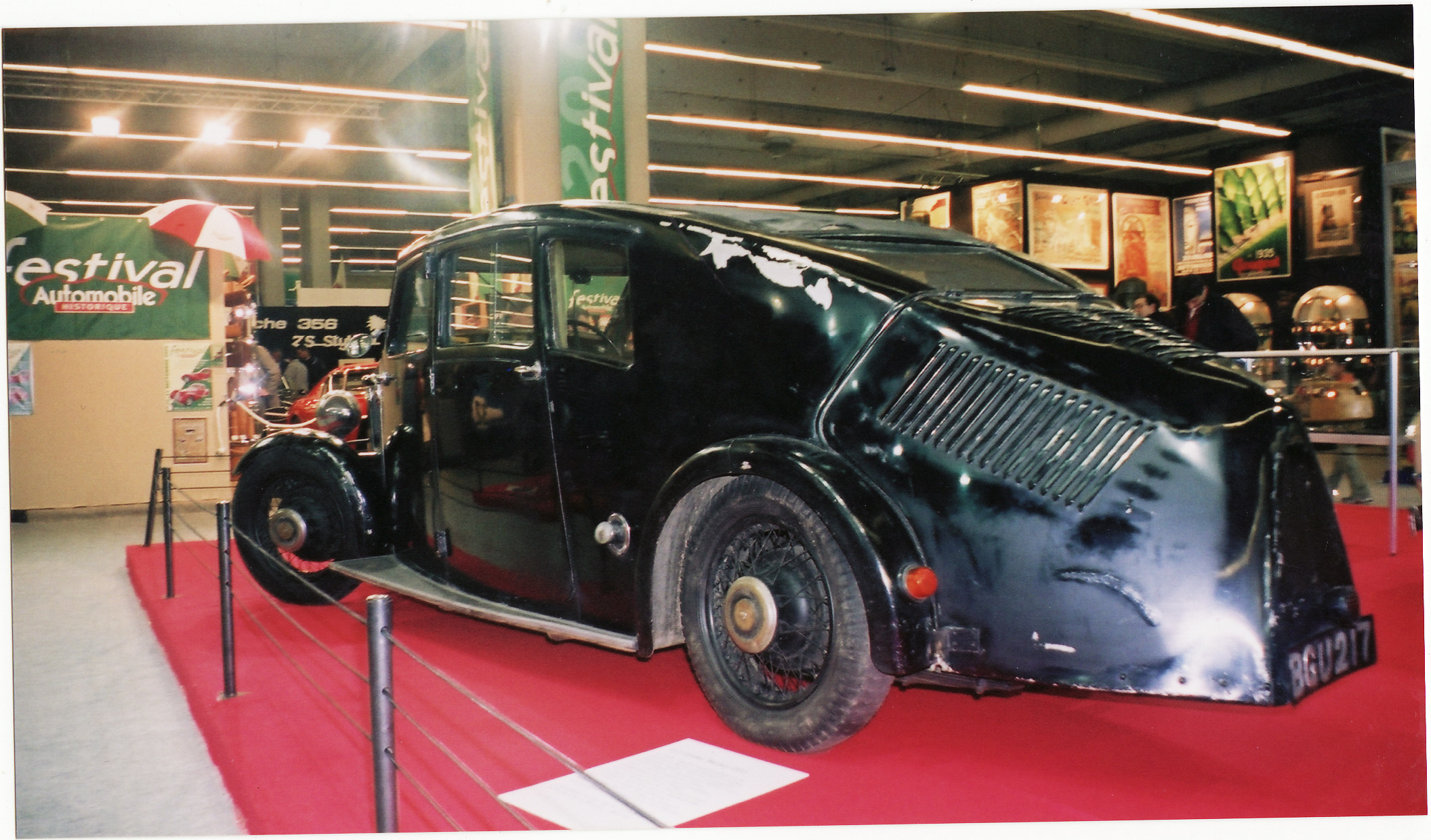
3. **The 1930s: Aerodynamics and Streamlining**The 1930s brought about a truly revolutionary paradigm shift in car design, moving decidedly towards the principles of aerodynamics and streamlining. This transformative period was heavily influenced by advancements in aviation and a burgeoning scientific understanding of wind resistance, compelling designers to create vehicles with smoother, more integrated forms that cut through the air more efficiently. The boxy, angular silhouettes of previous decades began to recede, replaced by elegant, curved surfaces that visually hinted at speed and modernity, even in stationary vehicles.
A key characteristic of this era was the integration of elements that were previously separate. Headlights, for instance, transitioned from being distinct, mounted fixtures to becoming seamlessly incorporated into the fenders, contributing to a more cohesive and sleek front-end appearance. Running boards, once a prominent feature, became less noticeable as car bodies widened and lowered, further enhancing the integrated look and reducing drag. Crucially, these changes were not merely superficial aesthetic enhancements; they delivered tangible improvements in both vehicle performance and fuel efficiency, a practical benefit that began to gain importance as the market matured.
Chrysler’s 1934 Airflow stands out as a pioneering, albeit commercially challenging, example of this forward-thinking approach. Its remarkably streamlined silhouette, fully integrated headlights, and a windshield that elegantly curved into the roof showcased concepts that, despite its initial market struggles, would eventually become standard across the industry. The Airflow’s emphasis on weight distribution and unibody construction also represented a leap in engineering, even if its radical aesthetics were ahead of its time for consumer tastes.
This decade also solidified the emergence of professional automotive design as a distinct and vital discipline, fundamentally altering how vehicles were conceived. Figures like Harley Earl at General Motors established the industry’s first dedicated styling department, formally recognizing that a car’s appearance had become as critical as its mechanical prowess. This institutionalization of design ensured that aesthetic considerations would henceforth be central to the automotive development process, laying the groundwork for future styling departments that would blend artistry with engineering.
4. **The 1940s: Function Over Form (Post-War Transition)**The late 1940s represented a crucial transitional phase in the broader history of car design, marked by the immediate aftermath of World War II. As manufacturers painstakingly shifted their operations from wartime military production back to civilian vehicle manufacturing, the prevailing design philosophy temporarily reverted to a strong focus on practicality and functionality. While pre-war models often underwent modifications to expedite production, the primary effort was directed at retooling factories and meeting the urgent consumer demand for reliable transportation after years of rationing and scarcity, making expediency a key design driver.
Cars from this period typically featured more rounded bodies, yet still maintained distinct, separate fenders and headlights, elements carried over from earlier designs. The use of chrome, a hallmark of pre-war luxury and soon to be 1950s exuberance, was notably sparing due to significant post-war material shortages, further emphasizing a pragmatic approach to design. However, this decade also saw the emergence of the “pontoon” styling, characterized by smoother, more integrated fenders that began to hint at the future direction of cohesive, full-width body designs, gently bridging the gap between older segmented forms and newer, unified aesthetics.
Models such as the 1947 Studebaker Champion and the 1948 Cadillac Series 62 introduced modest yet significant styling innovations, moving away from overly ornate aesthetics towards cleaner lines that hinted at a more modern future. The 1949 Ford, in particular, revolutionized design with its then-radical slab-sided look and fully integrated fenders, setting a new precedent for unified body construction. This holistic approach to bodywork marked a departure from the “separate component” philosophy of earlier decades, paving the way for the sleek, integrated designs to come.
Practicality remained the paramount concern as consumers prioritized dependable transport, necessitating robust and serviceable vehicles for everyday use. As a result, color palettes remained conservative, with blacks, navy blues, and deep greens dominating showroom floors, reflecting a subdued post-war sensibility. The emphasis was on getting back to basics, providing functional and accessible mobility, rather than on extravagant displays of style, which would soon explode in the following decade.
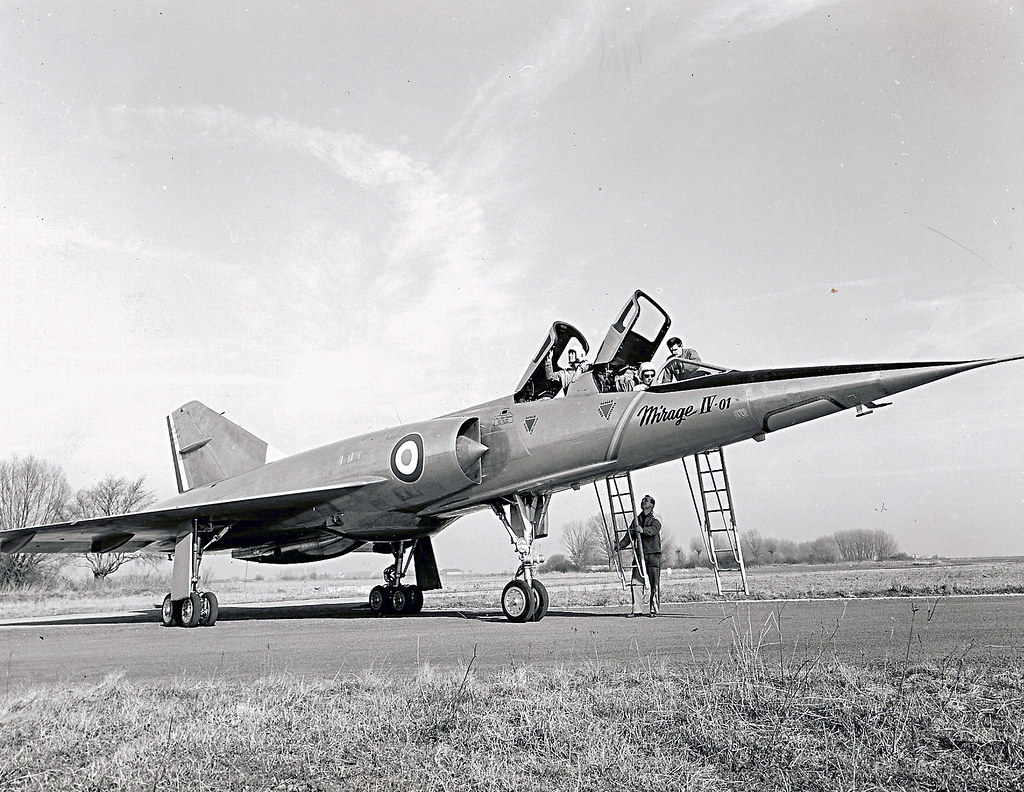
5. **The 1950s: Jet Age Influence and Tailfins**The 1950s burst onto the automotive scene with an undeniable spirit of exuberance and optimism, directly channeled into dramatic and often flamboyant styling changes that captured the public imagination. This was an era profoundly influenced by the burgeoning Jet Age, where designers eagerly incorporated aerospace-inspired elements into everyday vehicles, symbolizing a future of technological advancement, speed, and limitless possibilities. The design language became bold, aspirational, and distinctly American in its expression of post-war prosperity and cultural confidence.
Perhaps the most iconic and defining feature of the decade was the tailfin, which reached its absolute zenith. The 1959 Cadillac Eldorado, with its dramatically exaggerated rear protrusions, stands as the ultimate emblem of this trend, embodying the era’s maximalist approach to design. Chrome, previously scarce due to wartime restrictions, now flourished with an almost audacious abandon, adorning bumpers, grilles, and trim pieces, adding a brilliant sheen that underscored the luxury and status of these vehicles. Two-tone paint schemes also became a standard offering, further enhancing visual appeal and allowing for creative color combinations that reflected the era’s playful spirit.
Cars from the 1950s grew notably longer and lower, embracing the “Forward Look” design philosophy pioneered by Chrysler designer Virgil Exner. This approach aimed to give vehicles a sense of dynamic motion and perceived lower center of gravity, even at a standstill. Wraparound windshields not only improved visibility but also added significant visual flair, contributing to the futuristic aesthetic and creating a more expansive cabin feel. The sheer scale and ornamentation of these vehicles were unprecedented, making them undeniable statement pieces on the road.
Beyond mere looks, the decade introduced a host of advanced comfort and luxury features—such as power steering, automatic transmissions, and air conditioning—as standard in higher-end models, reflecting a new level of consumer expectation for convenience and ease of driving. Bright, evocative colors like Tropical Turquoise and Coral Red completed the picture, perfectly capturing the era’s optimistic, vibrant, and audacious outlook. The 1950s truly established the automobile not just as transportation, but as a lifestyle icon and a symbol of the American dream.
The mid-century proved to be a pivotal point, laying the groundwork for an entirely new chapter in automotive aesthetics, one that would redefine performance, grapple with global challenges, and ultimately embrace a digitally driven, sustainable future. As the world sped into the latter half of the 20th century, cars ceased to be mere symbols of post-war prosperity and began to reflect a more complex interplay of power, evolving social dynamics, and technological breakthroughs that would forever alter their form and function. This next phase of automotive design is a fascinating journey through eras defined by muscle, efficiency, digital precision, and an unprecedented commitment to environmental stewardship.

6. **The 1960s: Muscle Cars and European Styling**The 1960s burst forth with a profound duality in automotive design, marking a clear divergence between the raw, unbridled power of American muscle cars and the refined, elegant minimalism of European styling. On one side of the Atlantic, iconic models such as the Ford Mustang, Chevrolet Camaro, and Dodge Charger cemented their place in history, embodying a distinctly American ethos of performance. These vehicles were unmistakable with their characteristic long hoods and short decks, a visual language that screamed horsepower and speed, directly appealing to a burgeoning youth culture that craved excitement and individuality on the open road.
Across the pond, European designers forged a different path, prioritizing cleaner lines, sophisticated aerodynamics, and a timeless aesthetic that would endure for decades. The 1961 Jaguar E-Type, a masterpiece of flowing curves and undeniable grace, showcased a commitment to elegant form that transcended mere functionality. Similarly, the Porsche 911, first introduced in 1963, established a silhouette so enduring and perfect that its fundamental design has continued to influence its successors even today, a testament to its masterful balance of style and engineering prowess. These European counterparts offered a counterpoint to American flamboyance, valuing precision and understated beauty.
This decade also marked a significant aesthetic shift away from the previous era’s excesses. The once ubiquitous tailfins, a hallmark of 1950s design, gradually disappeared as designers embraced cleaner profiles and more understated forms. Straight edges and a greater emphasis on rectangular shapes began to replace the voluptuous curves of earlier models, signaling a move towards a more modern, structured appearance. Performance-focused features, however, remained paramount, with elements like aggressive hood scoops and bold racing stripes serving as undeniable visual cues, powerfully communicating the vehicle’s inherent speed and dynamism, even when parked.
Within the cabins, interior design experienced its own quiet revolution, moving beyond the bench seats of the past to embrace a more driver-centric philosophy. Bucket seats became prevalent, offering better support and a sportier feel, while floor-mounted shifters added to the interactive driving experience. Dashboards evolved to be more driver-oriented, with instrumentation thoughtfully arranged for optimal readability and control. Furthermore, color palettes expanded dramatically, moving beyond conservative tones to incorporate vibrant metallic finishes and a kaleidoscope of bright hues, perfectly reflecting the decade’s youthful energy, rebellious spirit, and an eagerness to break free from tradition.
Read more about: The 11 Iconic Rides We’re Passionately Pining For: A MotorTrend Wishlist for the Ultimate Automotive Revival
7. **The 1970s: Wedge Shapes and Environmental Concerns**The 1970s heralded a profound paradigm shift in automotive design, largely compelled by the seismic impact of the 1973 oil crisis. This global event forced a fundamental re-evaluation of design priorities, pushing fuel efficiency to the forefront of manufacturers’ agendas. Out of this necessity emerged the distinctive “wedge” design—characterized by sharp, angular lines and a forward-sloping profile. This aesthetic was not merely a stylistic choice; it was intrinsically linked to aerodynamics, offering a more efficient way for cars to cut through the air. Legendary examples like the Lamborghini Countach and the Lotus Esprit vividly encapsulated this radical departure, their aggressive, almost futuristic forms signaling a new era of automotive thinking.
Beyond the crisis-driven push for efficiency, the 1970s also saw the escalating influence of environmental regulations and burgeoning safety standards profoundly reshaping design decisions. Designers were now tasked with the complex challenge of incorporating larger, more protective bumpers and an array of new safety features, all while striving to maintain an appealing visual aesthetic. The nascent use of computer simulations for crash testing began to exert a tangible influence on the fundamental body structures of vehicles, leading to the development of crumple zones and stronger passenger cells, effectively merging safety engineering with exterior design.
Material technology saw significant advancements during this turbulent decade, playing a crucial role in enabling these new design directions. There was an increased adoption of plastic components and the experimental use of early composite materials, which offered designers greater flexibility in crafting complex, non-metallic shapes. Crucially, these innovations also contributed to a reduction in overall vehicle weight, a vital factor in improving fuel economy. Thus, the evolution of car design in the 1970s was a direct reflection of an industry grappling with practical ecological and safety concerns, yet still pushing the boundaries of forward-thinking aesthetics.
Car Model Information: 1986 Lamborghini Countach LP5000 Quattrovalvole
Name: Lamborghini Countach
Caption: Lamborghini Countach LP5000 QV
Manufacturer: Lamborghini
Production: 1974–1990
Assembly: Sant’Agata Bolognese
Designer: Marcello Gandini
Class: Sports car
BodyStyle: coupe
Layout: Longitudinal engine,mid-engine,rear-wheel-drive
Related: Lamborghini LM002
Engine: Lamborghini V12,V12 engine,LP400, LP400 S: {{cvt,3929,cc,L,1,disp=flip
Transmission: synchromesh,Manual transmission
Wheelbase: 96.46 in
Abbr: on (LP5000QV)
Order: flip
Length: 162.99 in
Width: LP 400: {{cvt,74.28,in,mm,0,abbr=on,order=flip
Height: 42.13 in
Weight: {{convert,1300.5,kg,lb,0,abbr=on
Predecessor: Lamborghini Miura
Successor: Lamborghini Diablo
Doors: Scissor doors
Sp: uk
Categories: 1980s cars, 1990s cars, All articles with unsourced statements, Articles containing Italian-language text, Articles containing Piedmontese-language text
Summary: The Lamborghini Countach ( KOON-tahsh) is a rear mid-engine, rear-wheel-drive sports car produced by the Italian automobile manufacturer Lamborghini from 1974 until 1990. It is one of the many exotic designs developed by Italian design house Bertone, which pioneered and popularized the sharply angled “Italian Wedge” shape.
The wedge style was introduced to the public in 1970 with the Lancia Stratos Zero concept car. The first showing of the Countach prototype was at the 1971 Geneva Motor Show, as the Lamborghini LP500 concept.
The “Countach” nameplate was reused for the Sián-based limited-production hybrid-electric model called the Countach LPI 800-4 in 2021.
Get more information about: Lamborghini Countach
Buying a high-performing used car >>>
Brand: Lamborghini Model: Countach
Price: $674,900 Mileage: 15,743 mi.
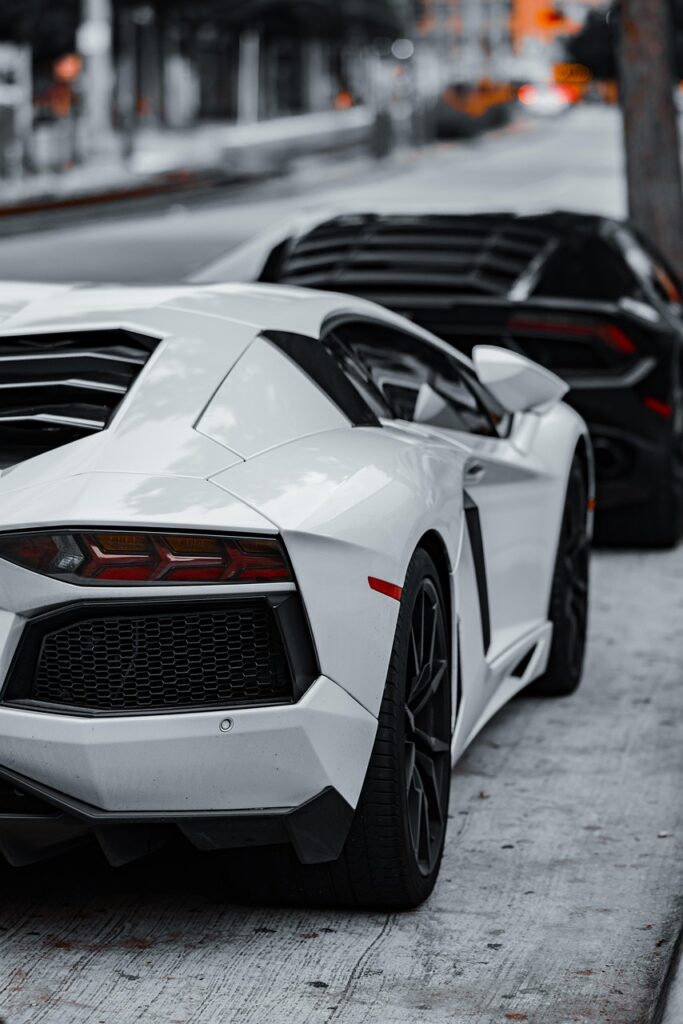
8. **The 1980s: Computer-Aided Design Revolution**The 1980s witnessed an irreversible digital revolution sweep through the automotive industry, as Computer-Aided Design (CAD) systems transitioned from experimental tools to indispensable, industry-standard equipment. This technological leap fundamentally transformed the design process, empowering engineers and designers to create incredibly precise virtual models of vehicles. The ability to manipulate and refine complex shapes with unparalleled accuracy in a digital environment before any physical prototyping occurred dramatically accelerated development cycles and opened up entirely new aesthetic possibilities that were previously unimaginable with traditional drafting methods.
Parallel to the rise of CAD, wind tunnel testing grew significantly more sophisticated, evolving from a supplementary step to a core component of aerodynamic development. This advanced testing allowed designers to meticulously refine vehicle profiles, resulting in smoother, more slippery forms that minimized air resistance. The Ford Taurus, a landmark vehicle of the era, stands as a prime example of how computational fluid dynamics and wind tunnel data directly influenced mainstream vehicle shapes, showcasing a new era where scientific rigor directly informed aesthetic decisions, producing cars that were both visually modern and functionally efficient.
The proliferation of digital tools extended beyond initial design concepts to encompass the entire engineering and manufacturing workflow. Engineers could now rapidly test countless design iterations, optimizing for performance, safety, and manufacturability with unprecedented speed and efficiency. This analytical capability, combined with the parallel evolution of robotic assembly lines, led to more precise construction, consistent quality, and tighter tolerances in production. The synergy between digital design and automated manufacturing gave rise to a distinct new design language characterized by smoother transitions between body panels and a more integrated, monolithic appearance, reflecting the technological precision that defined the decade.

9. **The 1990s: Smoothness and the Start of Digital Influence**The 1990s ushered in a distinctive era characterized by organic, flowing designs, a direct aesthetic consequence of the increasing power and accessibility of 3D modeling software. This technological advancement liberated designers from the geometric constraints of earlier decades, allowing them to sculpt intricate, complex curved surfaces that would have been exceedingly difficult, if not impossible, to conceptualize or produce using traditional, manual methods. The resulting vehicles often presented a softer, more rounded appearance, moving away from the sharp angles of the 1980s and embracing a fluid, cohesive aesthetic.
As digital capabilities expanded, virtual reality (VR) tools began to emerge, offering designers an unprecedented opportunity to immerse themselves within their creations in simulated environments before committing to expensive physical prototypes. This ability to ‘sit’ in a virtual vehicle and experience its interior ergonomics, visibility, and spatial dynamics led to significantly improved cabin layouts and a more human-centered approach to design. The meticulous refinement of every control placement, material texture, and overall user experience became achievable with greater precision, enhancing both comfort and intuitive operation.
Material advancements continued apace throughout the 1990s, playing a critical role in realizing these increasingly sophisticated designs. The widespread adoption of high-strength steel, aluminum, and more advanced composite materials enabled significant transformations in both form and function. These lighter yet stronger materials afforded designers greater creative freedom, allowing for more expansive and sculpted forms while simultaneously meeting ever-tightening safety and crash performance standards. Furthermore, innovative manufacturing techniques, such as hydroforming, facilitated the production of more complex, single-piece shapes, reducing part count and enhancing structural integrity. This decade also saw an increasing globalization of design influences, with international design studios sharing ideas and contributing to the development of more universal, yet still distinctly branded, design languages.
10. **The New Millennium: Electrification, Connectivity, and Autonomous Future**As the new millennium dawned, automotive design entered a truly transformative phase, characterized by an intricate blend of technological innovation, evolving aesthetics, and a profound response to shifting consumer values, particularly around sustainability and digital integration. The early 2000s saw a fascinating tension between embracing nostalgia, with retro-inspired vehicles like the Mini Cooper, Volkswagen New Beetle, and Ford Thunderbird charmingly recapturing classic appeal with modern technology, and a simultaneous push for bold, aggressive lines. Designers like BMW’s Chris Bangle introduced controversial yet impactful elements, such as the distinctive ‘flame surfacing’ technique, which created complex, visually dynamic curved panels, signifying a willingness to break established norms.
The 2010s marked a decisive pivot, with car aesthetics increasingly shaped by two paramount innovations: electrification and ubiquitous digital integration. Tesla emerged as a pioneering force, fundamentally redefining electric vehicle design with its minimalist philosophy, characterized by clean lines, smooth, unadorned surfaces, and distinctive lighting signatures that explicitly communicated a departure from the visual lexicon of combustion-engine styling. Simultaneously, interior designs underwent a radical transformation as physical buttons and dials steadily gave way to expansive touchscreens and fully digital displays, cultivating cleaner, more futuristic cabin environments that emphasized connectivity and intuitive digital interaction. The growing importance of sustainability also began to influence material choices, with recycled fabrics and alternative leathers making their debut in luxury vehicles, signaling a conscious shift towards eco-friendlier interiors.
Exterior styling during this period evolved significantly, with aerodynamic efficiency becoming a non-negotiable priority. Sleeker profiles, the strategic integration of active grille shutters that could open and close to optimize airflow, and flush door handles that seamlessly integrated into the bodywork became common design elements. These innovations weren’t merely aesthetic; they were crucial for maximizing the range and efficiency of both electric and traditional vehicles. Furthermore, brand identity became more fiercely articulated through distinctive design elements. Mercedes-Benz’s ‘Sensual Purity’ philosophy, BMW’s progressively enlarged kidney grilles, and Lexus’s dramatic ‘spindle’ grille all served as powerful, instantly recognizable visual signatures in an increasingly competitive and globalized automotive market.
Looking to the 2020s and beyond, the trajectory of automotive design is profoundly shaped by the twin forces of autonomy and sustainability. Electric vehicles now boast distinctive proportions, unburdened by the need for traditional engine compartments. This allows for shorter hoods, extended wheelbases, and flat floors, liberating designers to create more expansive and flexible interior spaces. Lighting technology has ascended to become a primary design element, with dynamic LED and laser lighting systems serving both functional purposes—such as enhanced visibility—and aesthetic ones, offering animated welcome sequences and sophisticated communication features for interacting with pedestrians and other drivers in increasingly complex urban environments.
Materials innovation has accelerated at an unprecedented pace, driven by a global commitment to environmental responsibility. Manufacturers are increasingly integrating recycled ocean plastics, plant-based fabrics, and other sustainable alternatives to traditional luxury materials, reflecting a profound shift in consumer values towards eco-consciousness. The advent of truly autonomous driving capabilities is set to revolutionize interiors, transforming them from driver-focused cockpits into versatile, flexible living spaces. Concept vehicles already showcase revolutionary features like rotating seats, retractable steering wheels, and highly transformable cabin layouts, anticipating a future where the act of driving becomes optional, and the car evolves into a mobile, connected sanctuary. These monumental shifts represent the most significant re-imagining of automotive design since its earliest days, promising a future that is not only technologically advanced but also deeply integrated with our planet’s well-being and our evolving relationship with mobility.
The journey of automotive design is an intricate tapestry woven with threads of human ingenuity, cultural shifts, and relentless technological advancement. From the rudimentary mechanics of the ‘horseless carriage’ to the flamboyant statements of the Jet Age, and onward to the hyper-efficient, digitally integrated, and sustainably conscious vehicles of today, each era has etched its unique signature onto the automotive landscape. What began as a purely functional endeavor blossomed into a complex art form, reflecting societal aspirations, economic realities, and groundbreaking innovations at every turn. Looking ahead, the convergence of electrification, AI-driven autonomy, and a profound commitment to environmental stewardship promises to redefine our concept of mobility entirely. The automobile, as we know it, is not merely evolving; it is transforming into a sophisticated, interconnected extension of our lives, poised to navigate a future where design is inextricably linked to intelligence, responsibility, and an exhilarating vision of what comes next on the open road. The most captivating chapters, it seems, are still being written, promising a future of automotive design that will continue to astonish and inspire.

